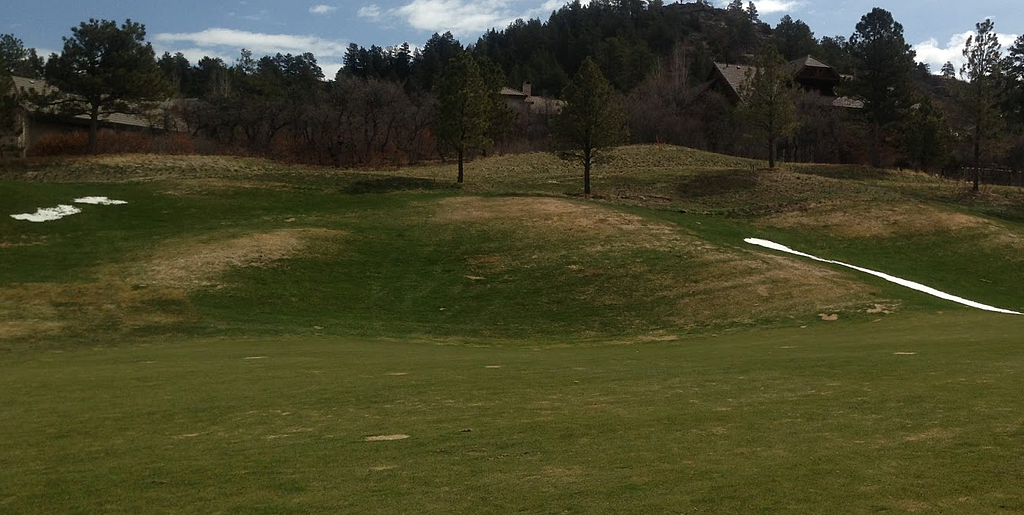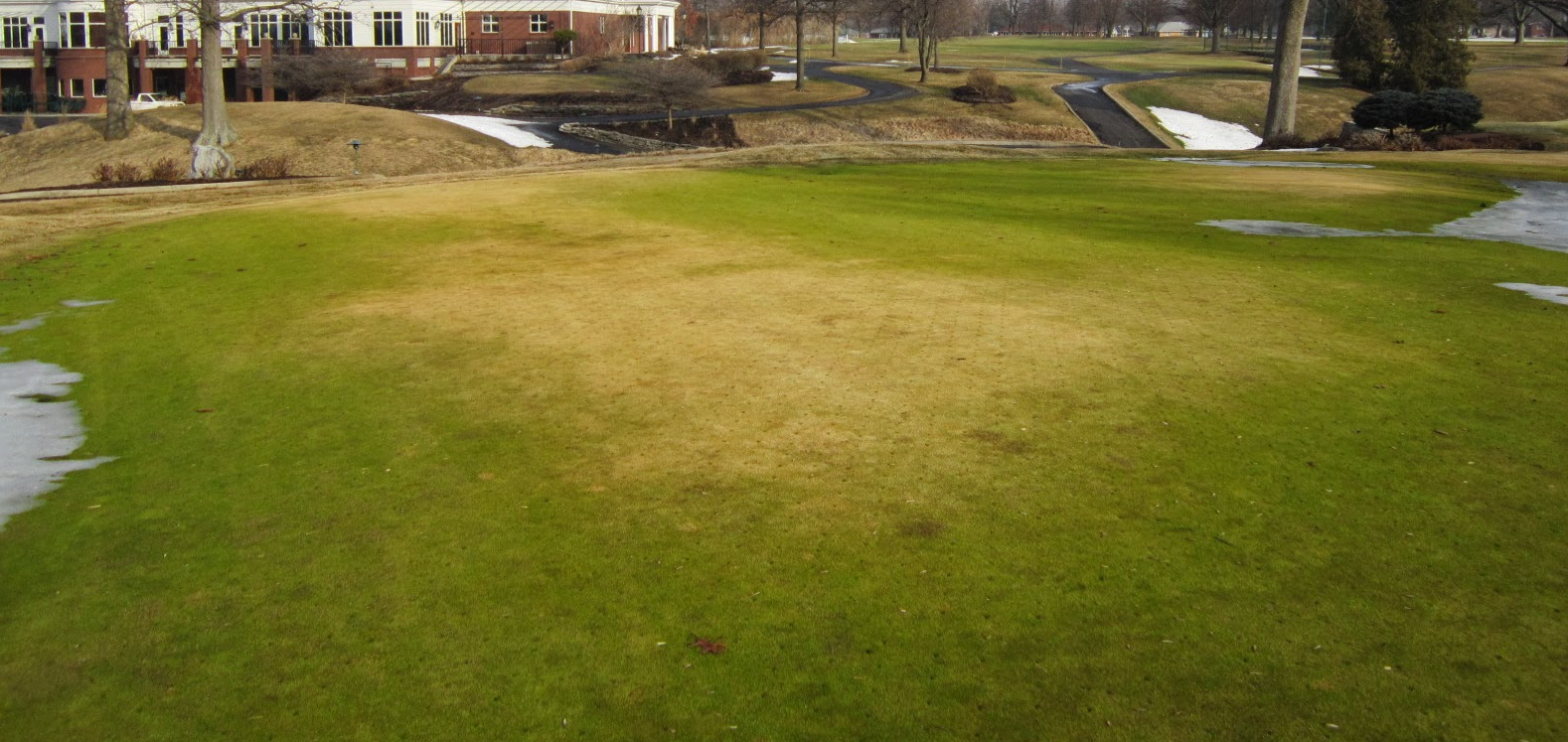
Add winter desiccation to the long list of what can happen to your lawn during the winter months. Winter Desiccation takes place when the turfgrass plant is in its dormant or semi-dormant stages and can cause varying degrees of damage severity. All turfgrass species are prone to winter desiccation if the right conditions persist. Winter Desiccation occurs when the leaves and other parts of the turfgrass plant are damaged often to the point of death because its roots are unable to supply enough water to keep up with the amount of water the turfgrass plant is losing to the atmosphere.
Prolonged snow coverage during the winter months is considered ideal and certainly helps reduce the risk of desiccation damage. Snow provides valuable moisture, and acts like a blanket, insolating the turfgrass and covering it from the potential harsh winter winds and unfavorable conditions. Without snow coverage, preventing damage from desiccation is difficult if susceptible site conditions exist or the weather conditions are less than ideal. The most severe turf winter damage typically occurs when there is no snow coverage and Dry, windy conditions persist. Generally, the worst affected spots in the lawn are in elevated areas, on exposed slopes, and well drained sites in sandy soils.

The extent of the desiccation damage can range from minor to severe. If minor damage has occurred, the lawn should recover on its own during the spring when the lawn begins to actively grow and break dormancy. If major damage has occurred, aggressive renovation practices will be required to repair these areas. Cultural practices such as Core Aeration, Overseeding, Topdressing and Slitseeding may be required.







